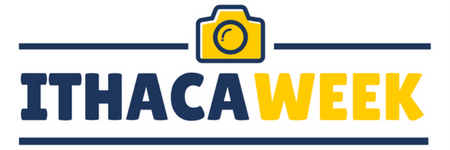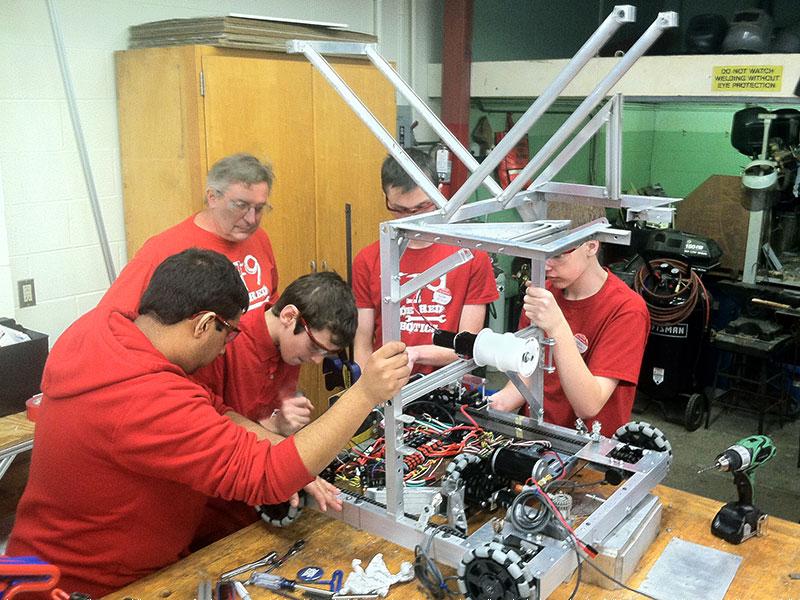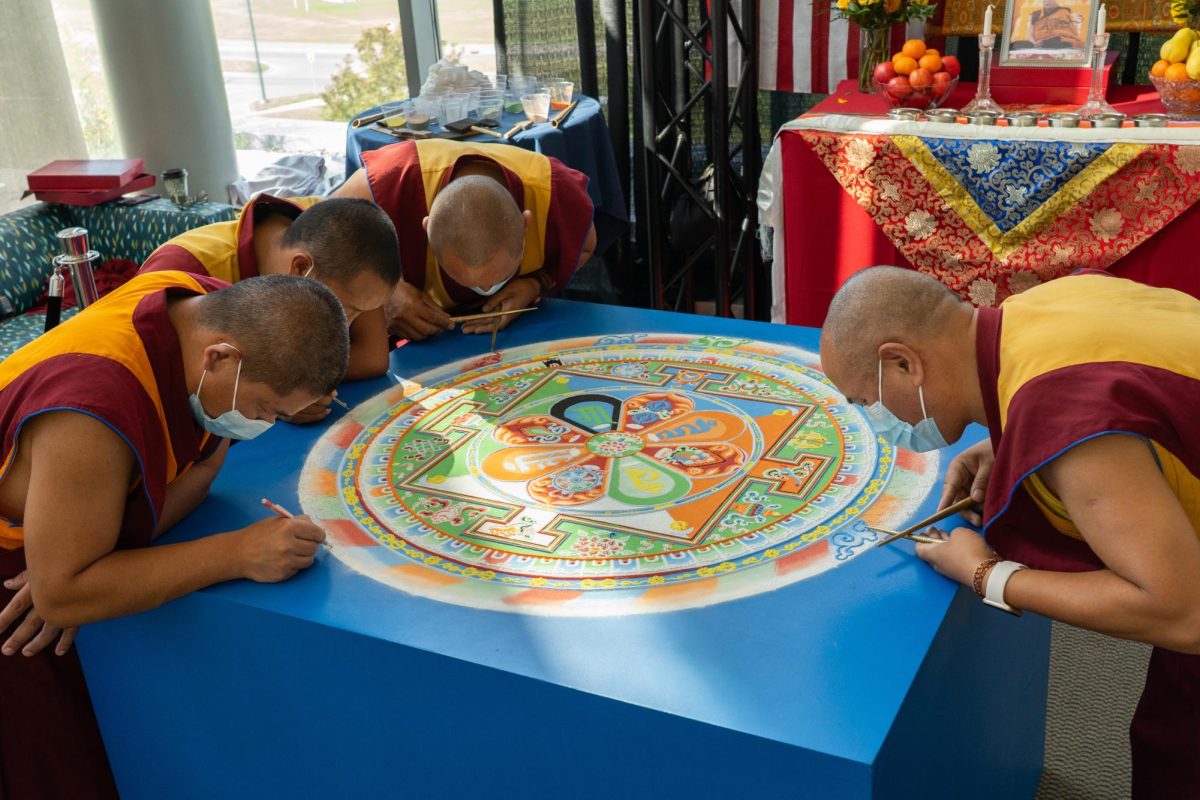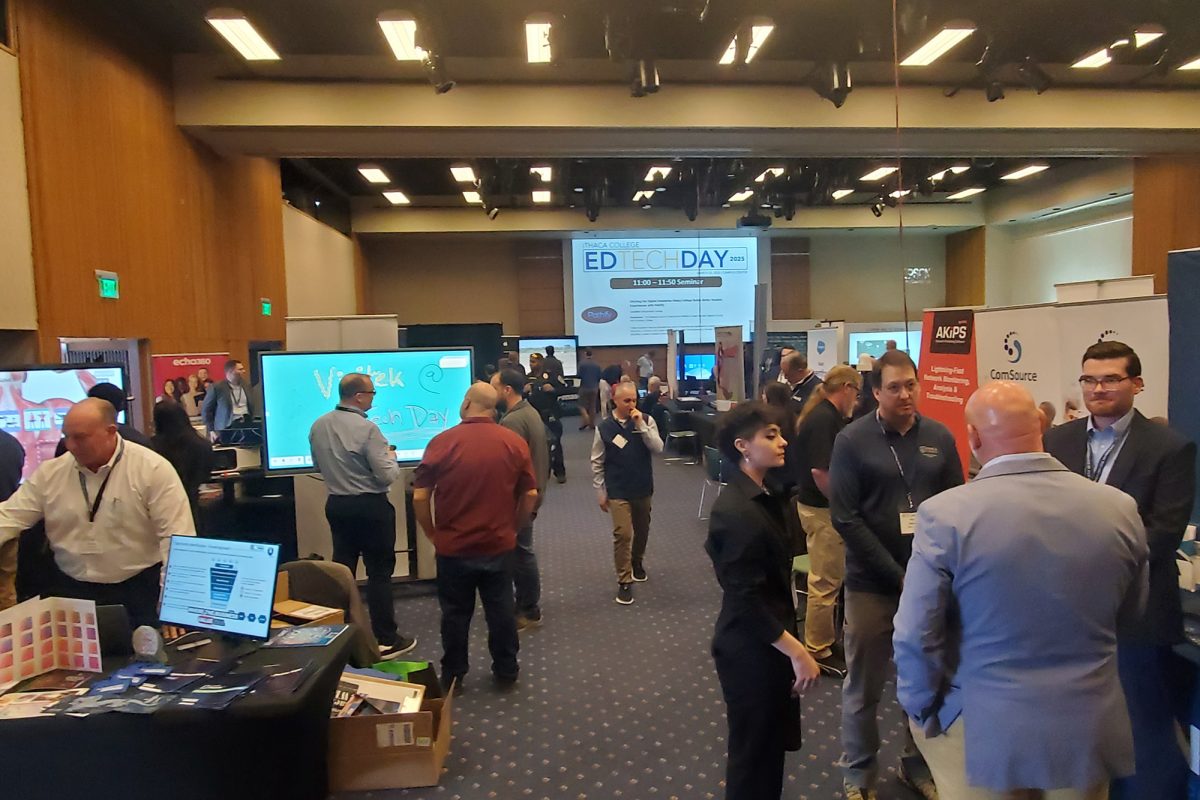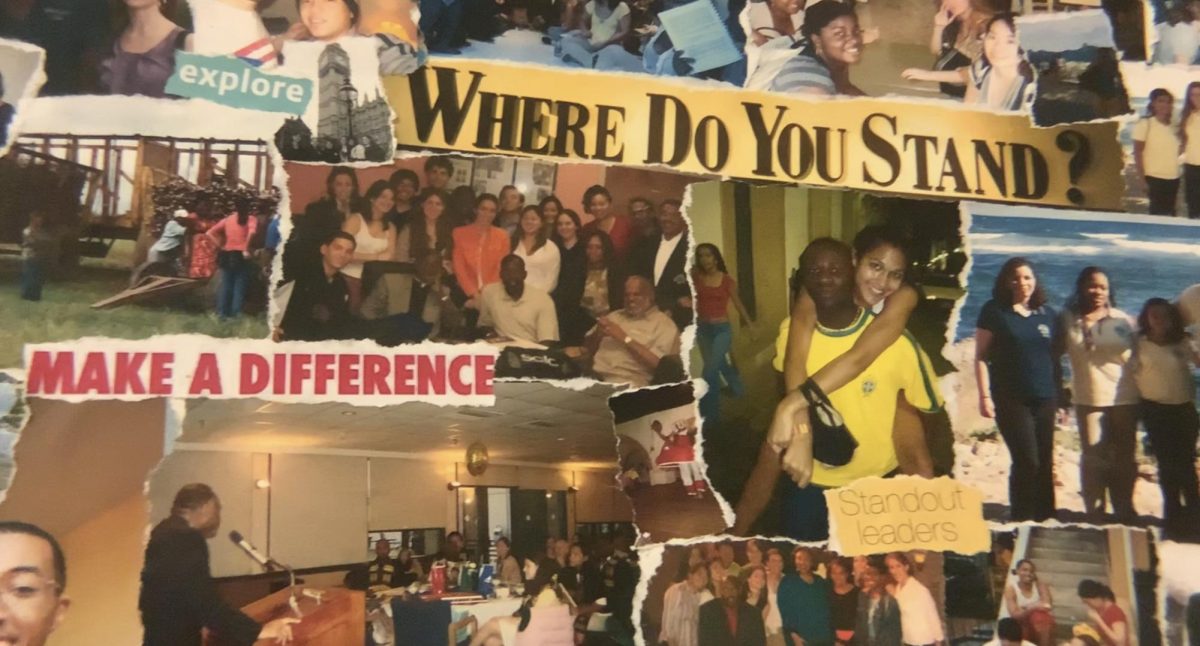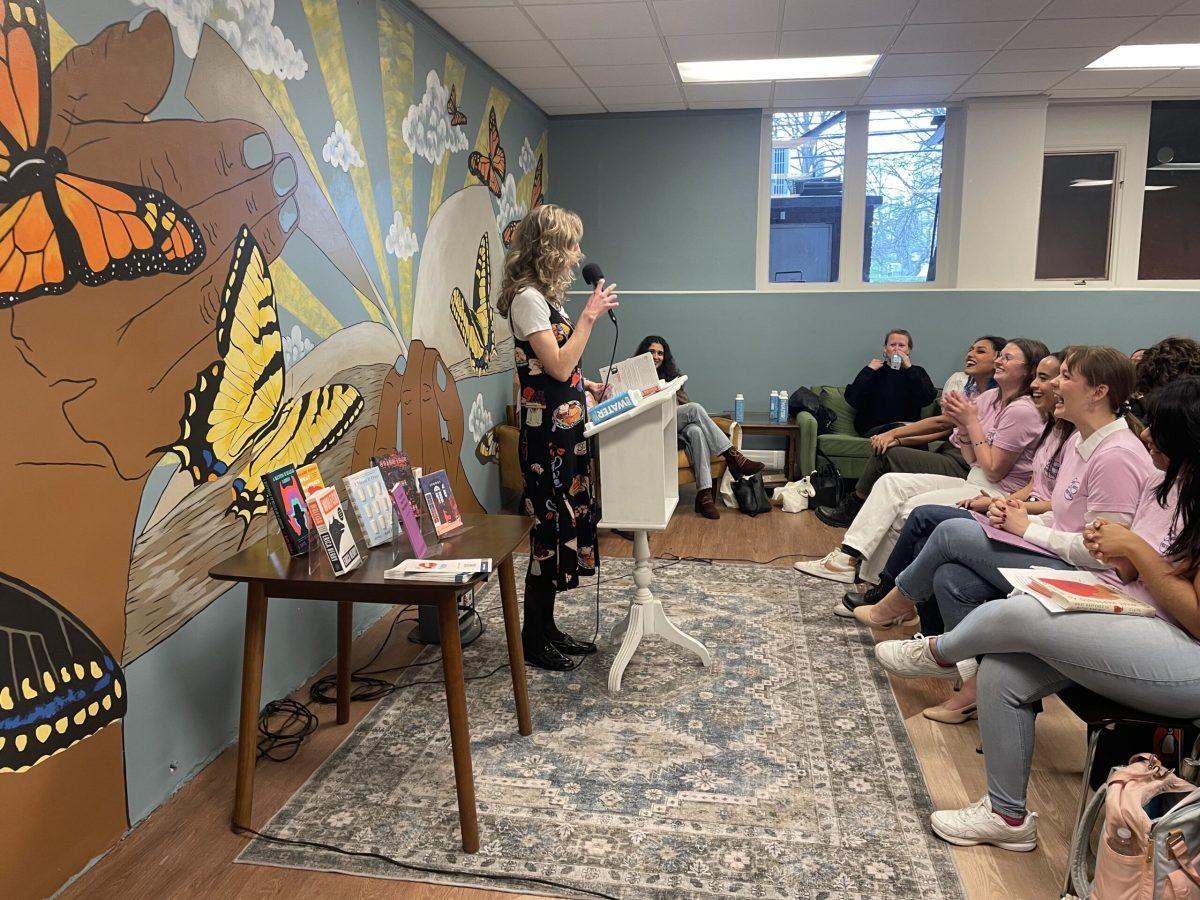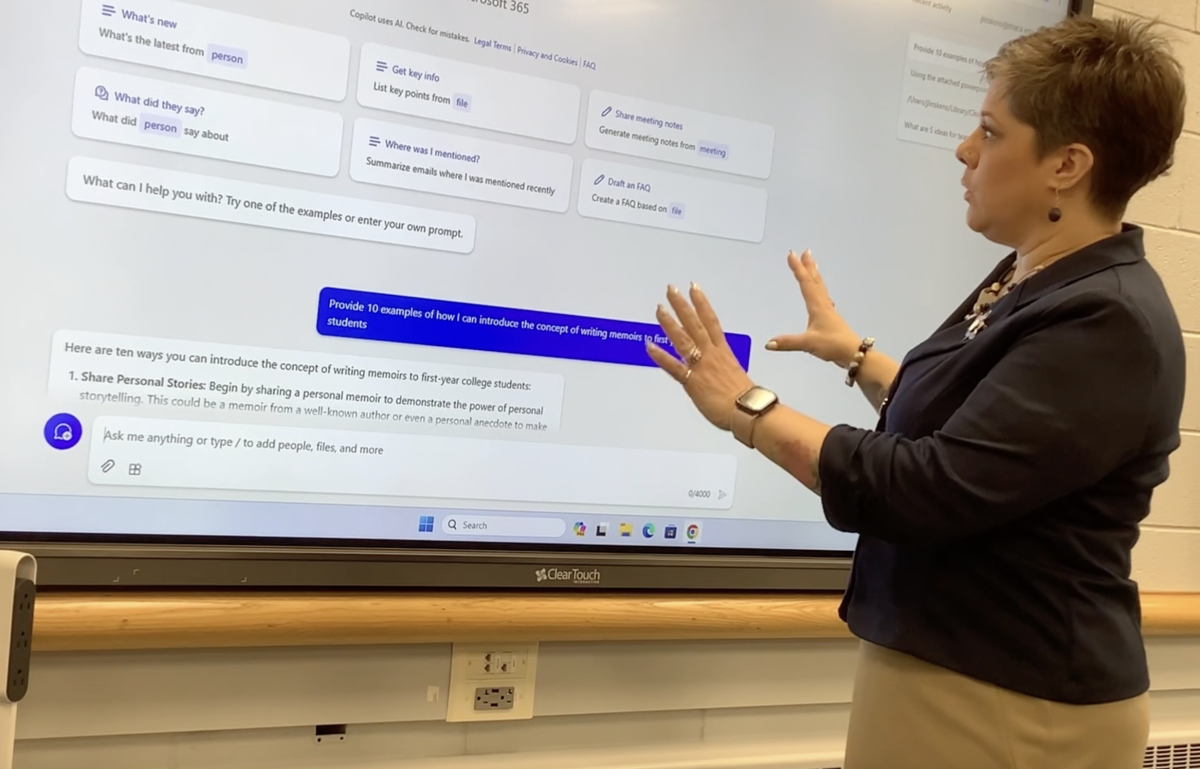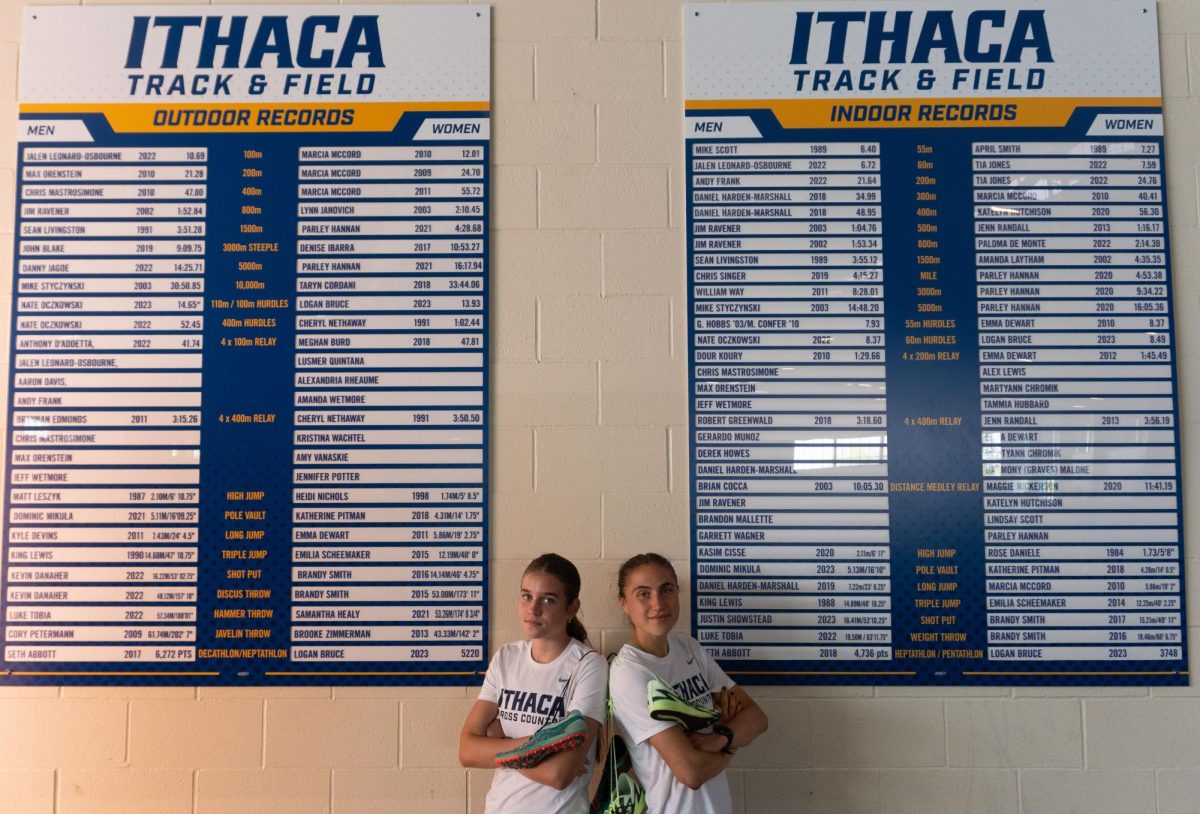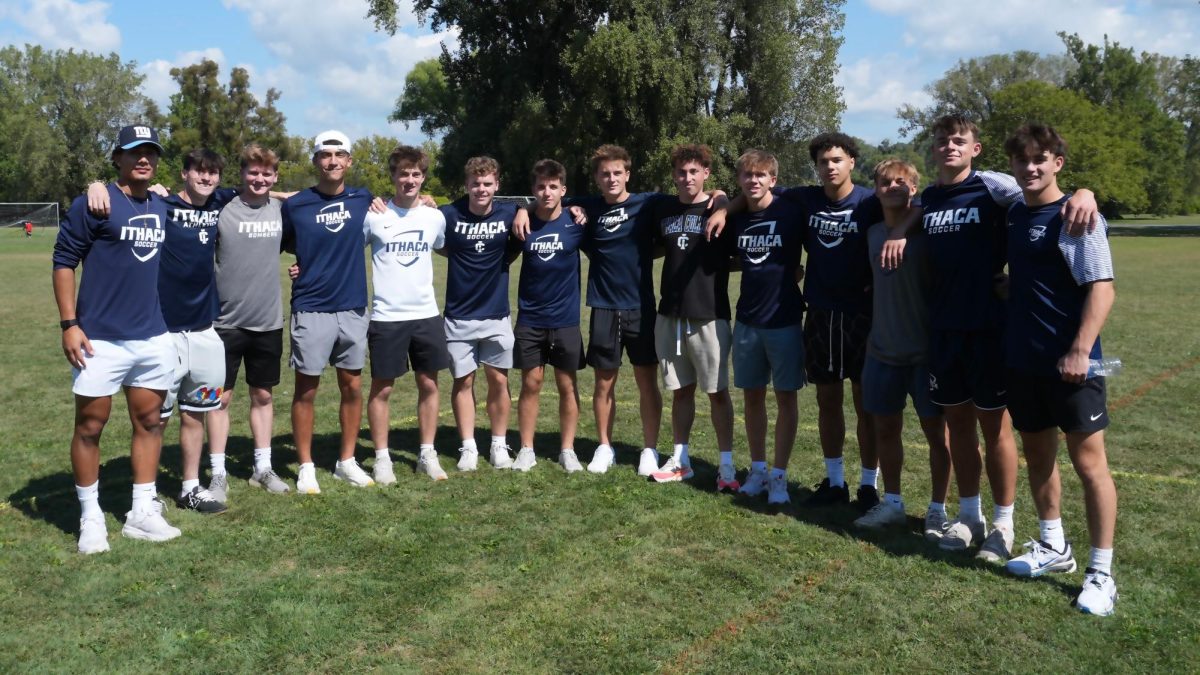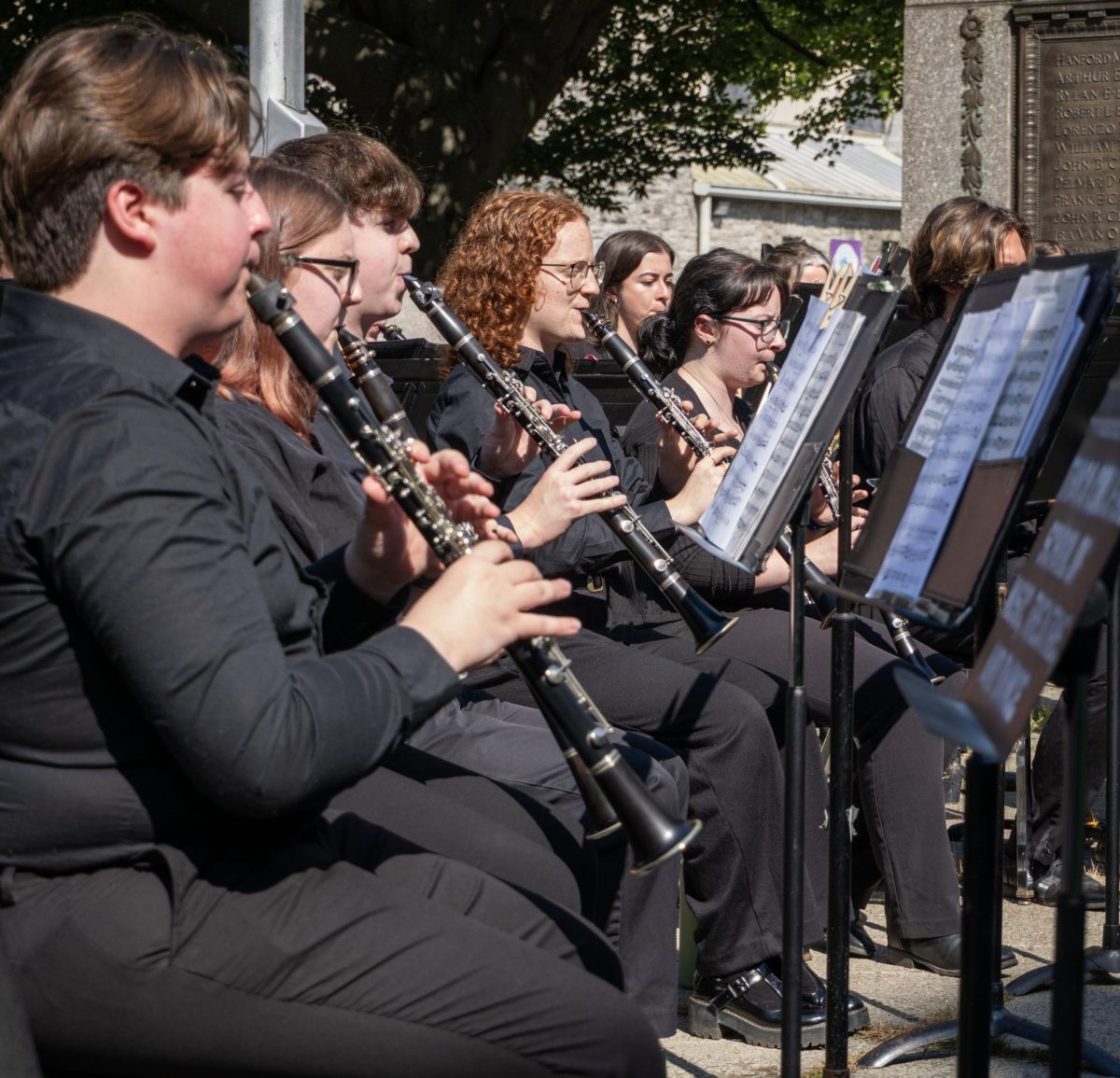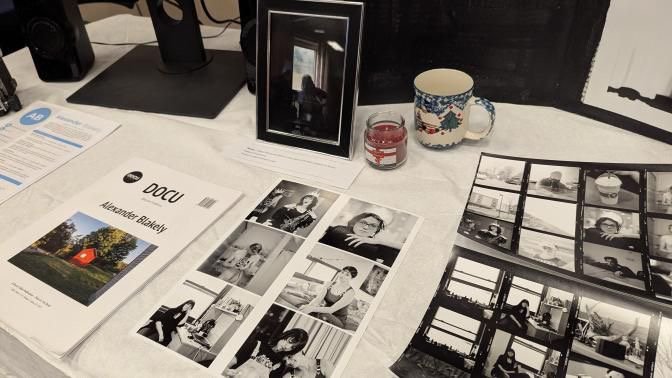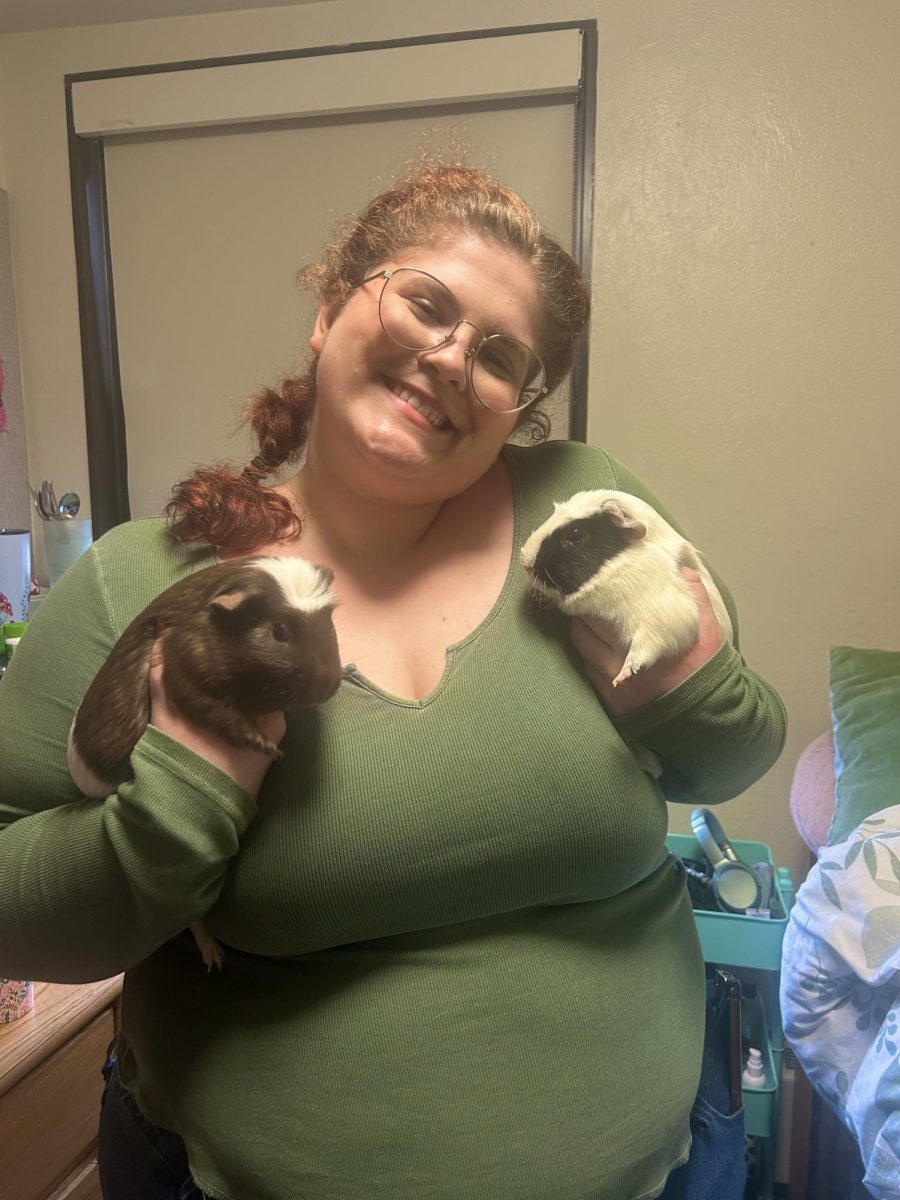The team, along with all others participating in the FIRST Robotics Competition, must stop construction on its robot by midnight Feb. 17, when the designated six-week building period ends. The IHS club will compete in two regional competitions in March, which will determine whether the team qualifies for the championships.
“The kids that have been on the team for the last two years…all they know is success,” the club’s faculty advisor, Ian Krywe, said. “That benchmark is what they’re aspiring to––it’s not going to be successful in their eyes if we don’t win.”
FIRST is a not-for-profit organization that seeks to encourage young people in grades K-12 to pursue careers in science, technology, engineering and math (STEM). This year’s robotics competition is expected to include around 3,000 teams comprised of about 75,000 high school students, according to the organization’s website.
While the robotics challenge usually includes both an offensive and defensive component, this year’s challenge, dubbed “Recycle Rush,” is purely offensive. According to extensive rules detailed in this year’s game video, each team’s robot must stack plastic totes and recycling bins and place pool noodles–representing litter–inside of the bins.
In addition to Krywe, there are about 20 mentors who help guide the students through the building process, many of them professional engineers themselves.
“I would not be an engineer if it was not for Code Red,” said Seth Wraight, a 2008 IHS graduate and former Code Red member who donates his time as a mentor. Wraight ended up getting an engineering degree from Rensselaer Polytechnic Institute after high school, and now works in Ithaca as a manufacturing engineer at BorgWarner. Wraight said he sees many students he works with being impacted similarly to how he was, but that the allure of the club has actually grown since he graduated. “A lot of these elementary school students are seeing this stuff, and they’re saying ‘this is what I want to do when I get to high school,’” said Wraight. “We never had that.”
“When you talk to [team members] about Code Red, they just get this light in their eyes,” senior Katie Henderson, the club’s public relations officer, said as she explained what made her join the club. “The community that they have, it’s something that’s almost tangible to non-members.”
Glen Pearson, the regional director for the FIRST Finger Lakes Robotics Competition, believes that because the learning process FIRST facilitates is so competition-focused, it helps to attract students that haven’t already immersed themselves in STEM. “We get the students that have already decided that’s where they wanted to go, but we also pull in a lot of students that have never thought they wanted to be there,” said Pearson.
STEM education has received increased attention and advocacy in recent years; the White House has launched multiple funds and initiatives to support STEM learning, and last May Governor Cuomo announced the STEM Incentive Program, which provides free tuition at SUNY schools for New York State students in the top ten percent of their graduating classes that choose to enter the STEM fields, but the role of afterschool programs in promoting STEM has missed the spotlight.
“Three or four years ago, nobody had ever heard of STEM,” said Dr. Sara Silverstone, Director of the Finger Lakes Hub of the Empire State STEM Learning Network. Silverstone has been pleased to see increased public attention on STEM, but still thinks there are continual hurdles that schools must face in integrating hands-on approaches to STEM-learning into their curricula. She believes that afterschool programs like FIRST allow for a deeper exploration of material than can often be undertaken in a traditional classroom setting. “You can be interdisciplinary; you can be creative,” said Silverstone, “without those restrictions that public education has come to deal with.”
Dr. M. David Burghardt, the creator and co-director for the Center for STEM Research at Hofstra University, is currently doing research to determine the effectiveness of afterschool programs at teaching STEM. Burghardt believes he may find that in the afterschool environment “[you] don’t have the constraint that [you] have during the school day,” and that because “you have a little more latitude with what you do,” this may equal a superior learning experience for children.
Katie Henderson said that besides the fact that being a Code Red member is such a hands-on learning experience, being on a team encourages a different type of learning than can be experienced in the classroom. “We’re all working towards a common goal,” she said, “and cohesiveness within robotics is essential.”
